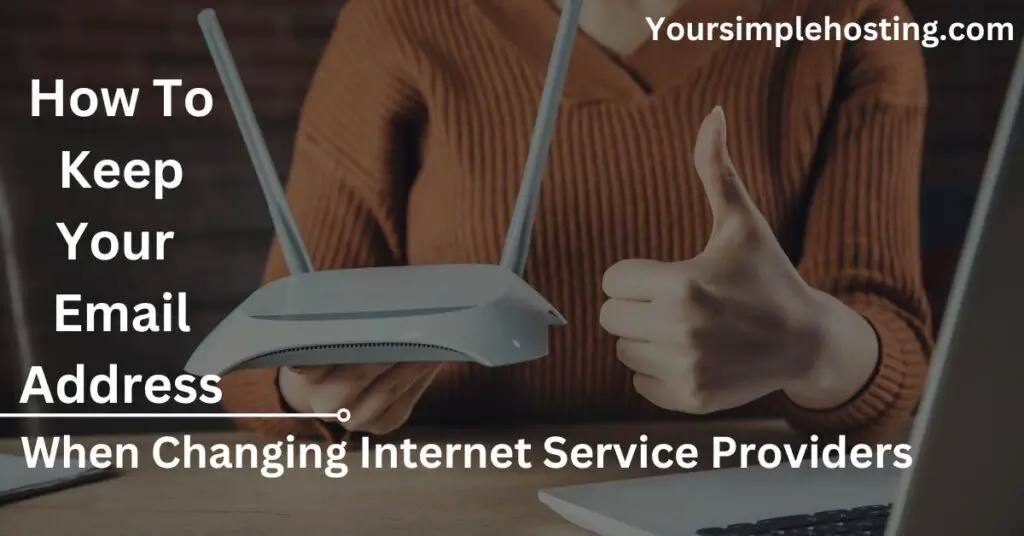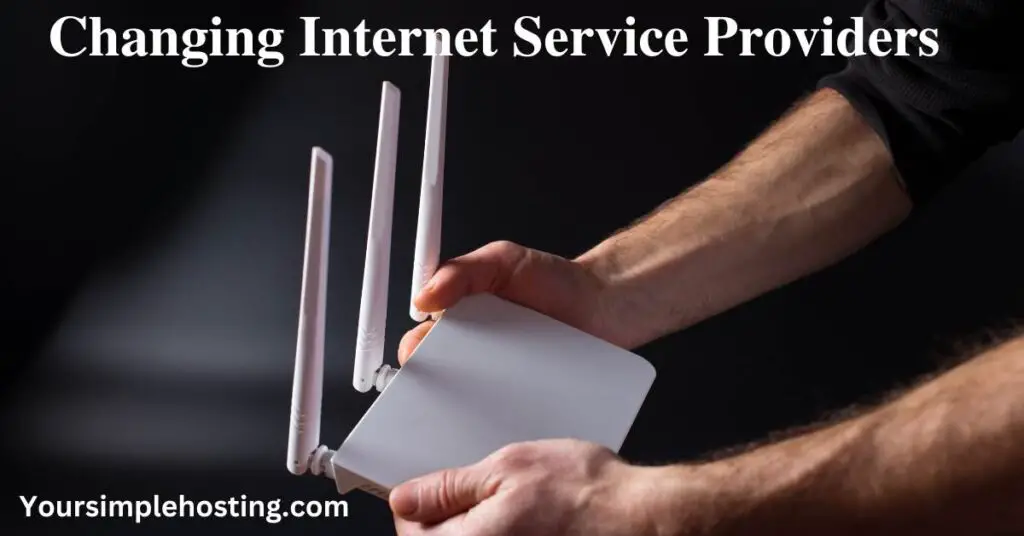Email addresses have become a crucial part of our daily lives, providing a reliable and secure means of communication and storing important information.
However, when changing internet service providers, one of the biggest concerns is how to keep our old email addresses.
Most ISPs offer email services, but what happens when you switch providers? Will you create a new email address, or is there a way to keep your existing one? If you’re using a free email service from your current ISP, such as Gmail or Yahoo Mail, you can use the same email address after you switch providers.
Below, I will look at the steps you can take to keep your email address when changing ISPs and continue to use it just as you did before the change.
Whether you’re a casual email user or a professional who relies on email for work, this guide will help you transition smoothly without disrupting your email communication.

Table of Contents
What Happens When You Switch Internet Providers?
When you switch internet service providers (ISPs), several things can happen, depending on your specific situation:
Installation of New Equipment
If you’re switching to a new ISP that uses different equipment, you may need to have new hardware installed in your home. Depending on your switching service, it could include a modem, router, or other equipment.
Change in Internet Speed
Your internet connection speed may change when you switch ISPs because different ISPs offer different speeds. In addition, the speed you receive will depend on your location, service type, and other factors.
Change in Data Usage
Some ISPs restrict the amount of data you can use each month, affecting your internet experience. If you’re switching to a new ISP with a different data usage policy, inform yourself of the changes in your internet usage.
New Email Address
If you have an email address given by your current ISP, you may need to create a new one when switching broadband providers. Some ISPs allow you to keep your email address after you leave, while others may offer a third-party email service that you can use.
New Customer Service
Different ISPs offer different levels of customer service. Therefore, you may experience a change in the quality of customer support when you switch, which is something to keep in mind when selecting a new ISP.
I suggest reading reviews about the internet service provider you’re interested in before switching. Switching ISPs can have several consequences, including changes in internet speed, data usage, email address, and customer service.
Researching options and understanding the policies of your new and old ISPs can ensure a smooth and seamless transition.
Can I Keep My Email Address When Changing Internet Service Providers?
You can keep your email address if you change your internet service provider (ISP). The process for doing so will depend on the type of email service you’re using and the policies of your new and old ISPs.
If you’re using a free email service from your current ISP, such as Gmail or Yahoo Mail, you can use the same email address after you switch providers. Log in to your email account through a web browser or email client.
However, if you have an email address provided by your current ISP, you may need to take a few additional steps to keep it after switching internet service providers.
Some ISPs allow you to keep your email address when you switch, while others may require you to open a new one. To determine the options available, check with your new and old ISPs to see their policies.
In some cases, you may be able to transfer your email address to a third-party email service provider, such as Google’s Gmail or Microsoft’s Outlook. This option can give you more control over your email address and ensure it remains intact even after switching.
Keeping your email address is also possible. However, the process will depend on your specific situation.
You can ensure a smooth and seamless transition by taking the time to research your options thoroughly and compare the policies of different internet service providers.

How To Keep Your Email Address?
If you’re changing internet service providers and want to keep your email address, take the following steps:
Check WIth Your New and Old ISPs
Before you switch providers, find out their email address policies. For example, some ISPs will allow you to keep your email address after you switch, while others may require you to create a new one.
Consider a Third-Party Email Service
If your new ISP does not offer email services or will not allow you to keep your email address, you can consider transferring your email address to a third-party email service, such as Gmail or Outlook.
Download Your Email and Contacts
Before switching ISPs, download important emails and contacts stored in your email account. This can be done using an email client, such as Microsoft Outlook or Apple Mail, or the email provider’s web interface.
Set Up Email Forwarding
You can set up email forwarding if your new broadband provider allows you to keep your email address but will not provide email services.
If you set up email forwarding, all incoming emails will be forwarded to a different email address you control, such as a Gmail account.
Update Your Email Address on All Your Accounts
After you switch ISPs, update your new address on all your accounts, such as social media, online shopping, and banking sites.
The steps above can help you keep your email address when changing ISPs, and continue to use it just as you did before the switch without issues.
Conclusion
The process for keeping your email address will depend on the type of email service you’re using and the policies of your new and old ISPs.
The options include checking the policies of your new and old ISPs, moving your email address to a third-party email service, downloading your emails and contacts, setting up email forwarding, and updating your email address on all your accounts.

Leave a Reply